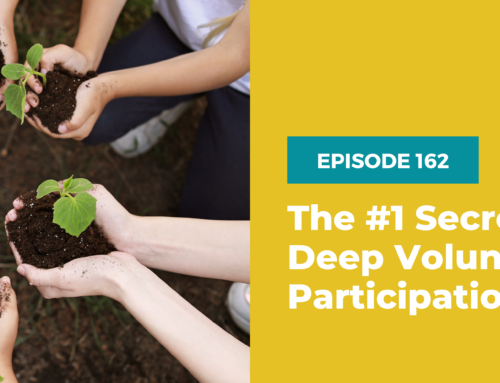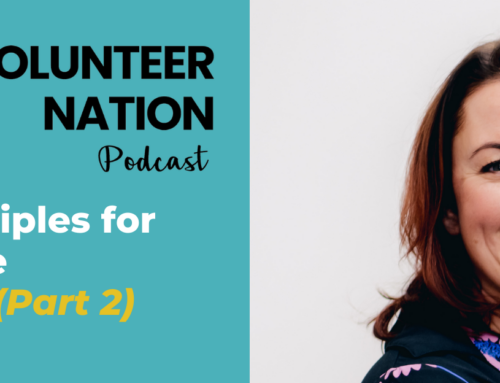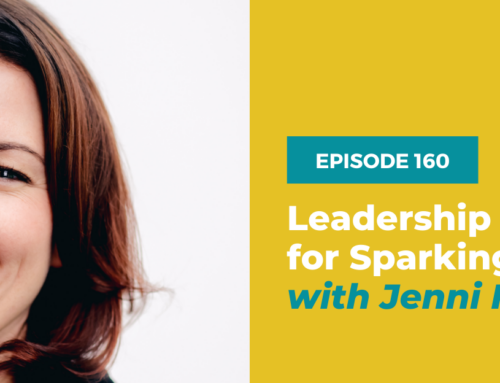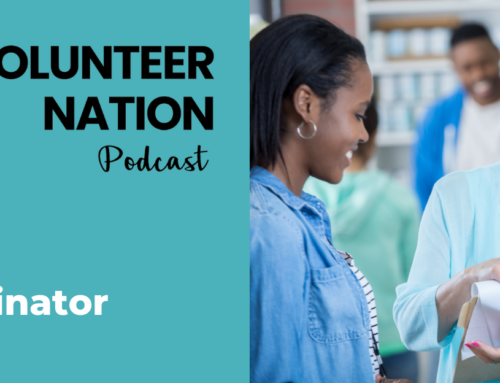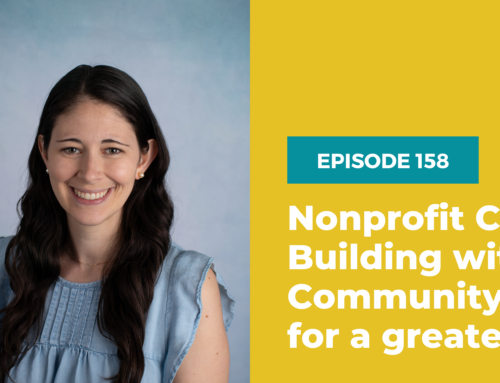
January 16, 2025
Episode #145: Build Your Program with the NEW VolunteerPro Volunteer Impact Lab!
In this episode of the Volunteer Nation Podcast, Tobi introduces the newly rebranded VolunteerPro Impact Lab, a community dedicated to supporting volunteer-driven organizations in their program development and assessment.
Tobi discusses the enhancements and features of the platform, including the Volunteer Strategy Success Path model, assessment tools, and various training and coaching resources aimed at helping organizations build, grow, and scale their volunteer programs effectively. She also shares insights into strategic visioning, program development, recruitment, retention, and leadership phases crucial for successful volunteer engagement!
VolunteerPro Impact Lab – Episode Highlights
- [00:47] – Exciting Updates from VolunteerPro
- [02:08] – The Volunteer Strategy Success Path
- [04:33] – Building and Growing Your Volunteer Program
- [10:05] – The Five Phases of Volunteer Coordination
- [13:59] – VolunteerPro Impact Lab: Tools and Resources
- [17:55] – Advanced Training and Community Support
- [21:42] – Leveraging Technology for Volunteer Management
VolunteerPro Impact Lab – Quotes from the Episode
“ It’s really helpful to have a model of best practices to start from. You also need to have a process in place with some accountability so that you can build a momentum.”
Helpful Links
- Volunteer Managment Progress Report
- VolunteerPro Membership Community
- Volunteer Nation Episode #93: The 5 Phases of Successful Volunteer Coordination
- Volunteer Nation Episode #70: How to Organize a Volunteer Services Department of OneVolunteer Nation Episode #67: How to Set Up a New Volunteer Coordinator for Success
About the Show
Nonprofit leadership author, trainer, consultant, and volunteer management expert Tobi Johnson shares weekly tips to help charities build, grow, and scale exceptional volunteer teams. Discover how your nonprofit can effectively coordinate volunteers who are reliable, equipped, and ready to help you bring about BIG change for the better.
If you’re ready to ditch the stress and harness the power of people to fuel your good work, you’re in exactly the right place!

Contact Us
Have questions or suggestions for the show? Email us at wecare@volpro.net.
Rate, Review, & Follow Us on Apple Podcasts
If you love the content Tobi shares on the Volunteer Nation podcast, consider rating and reviewing the show! This helps us reach more people – and help more good causes just like yours – successfully engage enthusiastic, dedicated volunteers with less stress and more joy.
Click here, scroll to the bottom, tap to rate with five stars. Then, select “Write a Review” and let us know what you loved most about this episode!
Also, if you haven’t done so already, follow the podcast so you don’t miss a thing. Follow now!
Subscribe to ProNews: Our Weekly Resource Roundup
If you’d like to stay up to date on all new podcasts, blogs, freebies, and deals posted on our Tobi Johnson & Associates and VolunteerPro websites, subscribe to our weekly ProNews newsletter.
Every Wednesday, we’ll send you a digest of our freshest content, plus a bonus! Once you confirm your subscription, you’ll get our [Free eBook] The New Volunteer Manager: The First 90 Days.
Episode #145 Transcript: Build Your Program with the NEW VolunteerPro Volunteer Impact Lab!
Tobi: Hello there, friends and followers. I am on the road this week, down in Santa Rosa, California, giving a presentation on recruitment. Shout out to my Vita friends! Nice seeing you today at the retreat. I am recording from a hotel room, so my quality may not be as good as usual. I don’t know. I hope it is. But today I wanted to talk to you about an exciting new evolution at Volunteer Pro and the way that we’re going to be supporting volunteer driven organizations in their program development.
As you probably know, as a listener, we’ve had the VolunteerPro community for a while now, since 2015. And this year we made some major improvements and advancements in the community around program development and assessment.
These are things that we just couldn’t do back in the day when we started VolunteerPro, because the software simply didn’t exist, or it wasn’t affordable for us. But now we have the tools to make it happen. And we’ve got so many exciting things happening that I just wanted to take an episode to talk about how you can build your program with the new Volunteer Pro.
Wait for it. This is our new name for our community, the Volunteer Pro impact Lab. That is our new name. I’m really excited about it. It has been months in the making. I’ve been behind the scenes just quietly making upgrades to the community and last week I finished off most of them and it’s just an exciting place right now.
And so, I thought I would talk to you a little bit about our model, the way we go about organizing and looking at volunteer engagement across five phases of what we call our volunteer strategy success path. I want to talk to you about our assessment tool so that you can score your program maturity. And I want to talk to you about the ways that we support leaders of volunteers and volunteer fueled organizations in their program development.
Because a lot of folks are realizing that their strategy needs to be upgraded. When you think about your plan for 2025, what is it when it comes to volunteer engagement? Are you planning on sticking with the same model or do you need to shake things up and make some upgrades? Or maybe you’re like some of our volunteer pro members, building a brand new program from scratch.
Either way, our new volunteer pro impact lab is helping organizations like yours, if you’re in this situation where you’re looking to build new and exciting model, maybe a new way you’re working with volunteers, maybe advancing or expanding how volunteers are included in different roles in your organization.
Maybe it’s upgrading your onboarding or training process. Maybe it’s coming up with a whole new recruitment strategy, but there is really a holistic way of looking at this. And That’s what the volunteer impact lab is all about. And so we know you’ve got people to serve and an impact to make in your community.
We think that this new model and this new way of how we’re doing business really can help. So I thought I’d Spend some time today just talking through what our model is, and then what are the ways that we help. By the way, if you are an executive, a non profit executive who is hiring a new volunteer manager or coordinator and want to better support employees who are struggling are responsible for volunteer and community engagement, be sure to check out Volunteer Nation episode 67, where I talk about how to set up a new volunteer coordinator for success. And as always, I’ll put the link in the show notes.
So I want to talk really about what does program development looks like. What does it require? I have built several non-profit direct service programs or renovated them from the ground up and I know that it doesn’t happen by accident. I remember taking on jobs where I was building, particularly two programs I built, one was for homeless youth, one was for at risk youth employment and training programs where I was given basically some budget, some general marching orders in a program model, but pretty much I was building it from scratch.
I had to hire people, I had to develop the model further, had to even find sites for our program. So I really have built programs from scratch. And I know there’s a few things that need to be in place for this process to be successful. Having just done this myself in so many organizations. And one is to have some type of model.
It’s really important that you have some type of standards that you’re not just winging it. Winging it and just guessing and isn’t the best way to go. It’s really helpful to have a model of best practices to start from. You also need to have a process in place with some accountability so that you can build a momentum because if you’re not able to build your program relatively quickly.
Now, no program is built overnight. I would say give yourself at least six months, three months if that’s all you’re doing, 100 percent of your time. But usually that’s not the case. But it takes time to build program. But if your program development starts to lag, folks start to lose trust. in supporting you, whether it’s internally through co workers or externally through funders.
There is some impetus once we start building out or renovating a volunteer engagement strategy that we get it done. And we get it done relatively quickly. Now again, I say relatively because it takes six months to a year. Three months you can do it, but that’s if you’re doing only that. And then it takes time for it to uptake into your, and take root into your organization.
And so, in the end, you want to have in place a a volunteer engagement system that is clear, standardized, efficient, and replicable. So, no matter who steps in, and when I say replicable, that it’s replicable in each and every department throughout your organization, or throughout your enterprise, if you have multiple chapters, for example.
The importance, the reason for this is that no matter who steps in, your mission can continue. People aren’t reinventing the wheel. You don’t have 50 different training programs for volunteers. I’ve seen this and it’s just not a good economy of scale. And so we do need to find some type of standardization.
That doesn’t mean that things aren’t flexible when they need to be. In addition, and perhaps most important, is that you need a design that directly contributes to your organizations. most important goals. And so at VolunteerPro, when we do training and coaching, we often show our participants and our members how to make those alignments happen so that there’s a direct line between what’s happening with volunteer engagement and what the organization is promising to stakeholders.
Our model at VolunteerPro is our volunteer strategy success path model. It is based on decades of experience in the field and it really details out the key steps you need to transform your volunteer strategy from really just a fundamental basic strategy to a fully mature approach. And it doesn’t really matter how large or small your organization is, or your cause impact area is. This model helps you build scale and a strong foundation for success in volunteer involvement regardless. S
So, you could be a professional membership association, you could be a direct service organization, you could be in arts and culture, you could be animal welfare, it doesn’t really matter.
It’s a way of scaling and a way of building on a model that works regardless. Now, not every single milestone in our model is necessary for every single organization, but it is a model that works and is built on, I’m a CVA. It’s also built on CVA competencies. It’s built on experience. It’s built on standards and in different, you know, countries around the world that I’ve reviewed. So, it’s an amalgam of all these things.
It’s been refined over years and years, or the last three years, I would say. So, if you want a deeper dive into our volunteer strategy success path model, I’m going to go over in just in some brief slides detail what those five steps are. But if you want a deeper dive, be sure to check out Volunteer Nation episode 93, the five phases of successful volunteer coordination.
And I go deeper into each of these phases. But for today, I just want to lay out the foundation of what the volunteer pro impact lab model is and the assessment and how we use an assessment tool. So let’s start with phase one. Phase one is envision the future, and it’s basically strategic visioning. It’s where you set a bold and strategic vision for leveraging volunteer talent to meet your core organizational goals.
It’s really about bringing clarity to what success looks like for your organization. And it’s important to not skip this step because you want to make sure you’re in alignment across your organization as well. And so chances are if you don’t know where you’re going, chances are you’re not going to get there.
We want to make sure that we don’t skip this visioning step. Phase two, which is a phase that many people are engaged in, is building the foundation, which is your program development of your essential elements to programming. support long term success. This is the paperwork side of things and building an essential blueprint and all the implementation tools that you need.
Volunteer applications, what’s your process for onboarding, et cetera. Then in phase three, phase three is growing engagement. So that’s your volunteer recruitment. So, we like to teach modern recruitment strategies that attract a diverse fan base of supporters. and nurture those supporters until they’re ready to step up and volunteer.
We need to lean a lot into digital marketing because we know that for most of you, that is the primary way across the internet, on people’s phones, through email, through social media. Those are the ways that you’re attracting and communicating with potential volunteers and current volunteers. So that’s an important area that we focus a lot on, and having run a non-successful online business since 2015, it’s an area that we have a lot of expertise in. Phase four, sustain involvement, is about volunteer retention. It’s about improving the volunteer experience so that you can retain high impact volunteer talent. So, you want to be purposeful and become an architect of experience.
Sustaining involvement involves understanding the emotional informational needs of your volunteers, mapping their journey, making purposeful improvements. So, it’s an important part of what you do. The more you can retain volunteers, of course, the less hard you must work on volunteer recruitment.
Phase five is the phase that most people completely forget about or just can’t get to. And it’s one of the most important, it’s scale. So, it’s about leadership development and collaboration. It’s about supporting and almost putting yourself out of a job as a volunteer coordinator in some ways because you’re wanting to get greater ownership and accountability for volunteer engagement through coworkers, through volunteer leaders, so that you can scale.
Because if you’re only relying on the volunteer coordinator to do all of the work, You’re not going to get very far because that person is a limited resource. Uh, they may be super fantastic, but they’re not superhuman. None of us are. So, we’ve got to be able to work with community partners, work with employees, work with volunteer leaders to really expand and take ownership so that we can scale larger and larger volunteer engagement in our organizations. So, I think scale is an important way of distributing responsibility so that volunteerism becomes every part of everybody’s job. It’s not that everybody’s spending a ton of time on it, but that people understand that they have a role to play.
So, those are the five parts of our volunteer strategy success path. Now I want to talk a little bit about how the Volunteer Pro Impact Lab will help your organization get to full maturity. Because in each of those phases, we have it broken down in our success path model into three different levels.
And we have a, a basic level, a level where you are maturing, and then a full, a fully mature level. And so we help organizations. Inside the VolunteerPro Impact Lab, we help organizations assess where they’re at. That’s really the first step when you join. You want to take the Volunteer Strategy Success Path online assessment.
It’s just a quick assessment of yes no questions. All you do is answer yes or no. And it will create a report that helps you understand your overall program maturity score, and it also will score you on each of the five phases of our success path. And so at each stage, you’ll know if you’re early stage, adapting, or mature.
Those are the three score levels. So the other thing the report does, which is really cool, is it will make recommendations on next steps. And so there are links that link into our curriculum, our tutorials, and we make recommendations on next steps. And so, our members can, as they’re doing program development, it helps them focus because it can feel very overwhelming to be given a project where, hey, guess what? You’re going to build an entire volunteer program, or you’re going to renovate our volunteer program. People don’t know where to start. And so, the best place to start is an assessment. And it’s very rare for an organization to have absolutely no volunteer involvement, but if that’s the case, then the success path tool isn’t necessary.
But if you have anything going on with volunteers, it’s a great place to start. The next thing I intimated was our core course learning hub. And this is where we have short tutorials for every milestone in our success path model. And so once you score yourself. You know exactly where you need to do the work.
And guess what? We have tutorials that are short, less than 15 minute videos, along with, often, most of them have some type of downloadable tool template or, uh, tip sheet that can help you complete that milestone. And so it’s very focused. It’s also, these are short because they’re intended to get, that you’re able to get the information quickly and then start taking action.
So recently, one of the upgrades we made was we took our course learning hub, was in Kajabi, now it’s in Circle with the rest of our community resources and in the Impact Lab. So everything is now in one platform. It’s taken us a while to figure that out, which one we wanted to go with. One platform was doing well with community, one was doing well with courses, neither was doing both well, and finally one started doing both better than the other.
So that, at that point, then we decided, okay, we’re moving to one platform. The other thing we do, in addition to the Learning Hub, is we have live seminars and our seminars have start guides. So these start guides are step by step. What happens after you’re done with the training? What are you going to do next?
And we give you step by step as well as a list of other resources you might look at. So there’s a lot of support and our course seminars, we have course seminars that are more basic and then we have advanced seminars. So. Our core seminar we’re offering this month in January is actually a half day, and we’re training on how to build your volunteer program from the ground up, a step by step guide.
And we’re doing that because several of our volunteer pro members, now volunteer pro impact lab members, are building programs from the ground up. And when we survey our members, this was something they wanted to learn how to do. And I said, great, I’m going to, I’m going to show you exactly what I do when I work with my consultant clients.
We also have core seminars like Recognize, Reward, and Renew, How to Build a Winning Volunteer Recognition Plan. We have another core seminar coming up, Future Proof Your Organization, Volunteer Leadership Development and Succession Planning. Lots of really interesting things coming up. For advanced seminars in the next few weeks.
Months are between January and June. Actually, we hope to have that calendar already set up. We have building to scale step by step strategies to incorporate volunteers into every department. We’re also doing how to prepare self sufficient volunteer leaders for a high impact work. And then more of a leadership seminar, Myths and Mindsets, the Essential Practices of Powerful and Resilient Leaders of Volunteers.
Now these are just a few of the examples of the training we offer. There are many more. We do three to four events a month. So some of the other things besides as you’re building out your program, it’s helpful to have the information you need. The tutorials help you get quick information. The advanced seminars give you more in depth, deep dives.
We also do monthly member Q& A huddles where folks can come and ask questions directly about what they’re working on. So I’ll have folks talk about what they’re working on and I’ll offer advice and suggest resources that they might not know about. Everybody’s working on something a little bit different.
In the Impact Lab, people choose to work on what they choose to work on because everybody’s organization is slightly different. So it’s not a cookie cutter approach. It’s really about helping people where they’re at. So that’s what we do in our Q& A huddles. And we’re also going to be doing new member welcome calls every other month so we can help our new members get up to speed quickly.
The other thing I really enjoy presenting are quarterly planning intensives. If you’ve heard about Vision Week, we do an annual strategic planning boot camp. It’s five days, it’s in November, and our members often, who are current members, will join and build out their strategic plan for the year. So every quarter, We host a planning intensive and help our impact lab members create their 90 day sprint.
What are they going to focus on in the coming 90 days? It helps everybody stay on track. It helps everybody stay fresh. And it helps us all be accountable to our plans. So in program development, it’s often easy to get, you know, distracted by other things going on in our organization. Sometimes we feel stuck.
Sometimes we’re not clear on what we need to do next. And so that’s what these planning intensives are for. So every quarter we get together and we keep moving forward and have this meeting to, and we have worksheets for folks to work on so we can keep moving forward. Every month, we have a monthly volunteer pro MVP playbook that details out everything that’s going on in the month and as well as offer additional resources.
So, there’s a lot of ways we give information, provide information so that everybody knows what’s up. There’s a few brand-new things. that we’ve implemented in the last couple months that I think part of the reason we’re rebranding with a new name is because we just have so much more going on inside our community than we have in the past.
One is a Wisdom AI powered search widget, so you can actually go in the community and ask questions like, how do I use social media to recruit volunteers? It will scan all of our replay recordings from all of hundreds of videos, as well as. all of the Volunteer Nation podcast episodes, and it will provide, like ChatGPT, a narrative answer, and it will link to those resources.
And so it’s really great for folks who are wanting a quick answer for, for something and not sure where to find it. It’s also a great way to generate content. So if you’re creating content for your volunteers, for example, you could ask it, what are three tips for volunteer leaders? And it would provide you and you could cut and paste that and put it in your newsletter.
So it’s a great content creation tool. It’s also a great research tool. Couple more things we’ve added. One is the community leader board. We award points, the system awards points for people who have made high quality community contributions. So anytime in our pro talk community, if a member posts something, every time they get a like to a post or a like to a comment, they get a point.
And that leaderboard, I give bonus prize levels. It has bonus prize levels and some of those are coaching calls with me, private coaching calls, a review, a comms audit. There’s all kinds of things in there where you get even more one on one with me or my team. There’s volunteer impact lab swag. There’s all kinds of things you can win throughout the leaderboard.
We just want to really reward people who are really making contribution because we know peer learning is important. We also have our SuccessPath resource hub with over 200 tools and templates, all organized around our SuccessPath phases. So you can just browse and find and download. And then of course, as I mentioned, our Protop community forum where folks check in, network, ask questions.
And we’re really going to lean into accountability this year. And really ask people to share their wins as we go. So this is a big evolution at VolunteerPro. So I wanted to share it today. You may start to think, geez, how does anybody get all this done? We have ways that we help people be more effective and use their time wisely.
We make sure you stay focused at VolunteerPro and you’re not wasting your time spinning wheels on guessing what’s going to work. We also help you stay focused with the success path assessment. But you might also want to check out Volunteer Nation episode 70, where I talk about how to organize a volunteer services department of one because many of you are either a department of one, two, or maybe three people.
Most are small. departments. And so in that episode, I share quite a bit about how to organize and time management, how to really approach and manage your time so that you can get the work done. So I hope this has been helpful. It’s a little bit different of an episode this week, but I wanted to really share because I’m very excited about what technology has allowed us to do inside our community, the focus on program development and implementation support.
That’s really what we’re all about. It’s about helping your organization level up and really Take your volunteer strategy to the next level as well as renovate what needs renovating because you know in today’s world it requires us to be even better. It is not an easy place now to engage the community because there’s just so much noise and there’s so many organizations that are competing for talent and people are busy and overwhelmed.
To break through all of that, you really must have a best-in-class volunteer approach. And so that’s what the volunteer pro impact lab is all about, is helping you get and build toward full maturity and a best in class status so that your organization is the go to place for volunteers in your community, that you have a reputation that just attracts the right people to your good cause. So, I hope this has been helpful. I wish you all the best in your program development. I hope you also picked up some tips and I would love to see you inside the VolunteerPro Impact Lab.
We are here to help volunteer fueled organizations build maturity across our five pillars. If you’re interested and you’re ready to get going in 2025, visit volpro.net/join I hope to see you on the inside.
It’s a new day for Volunteer Pro and I cannot wait to see what happens inside our impact lab in the coming months. See you there. Take care, everybody.


